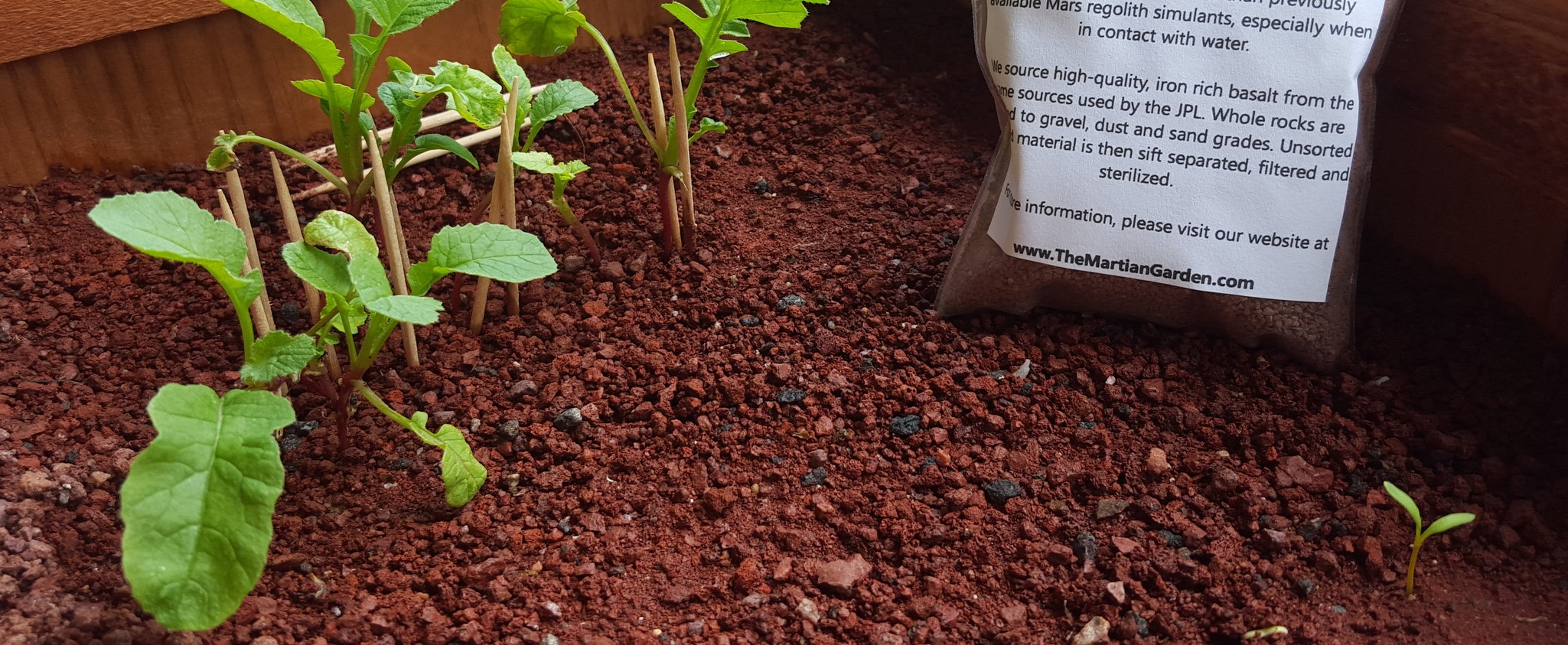
Can we grow plants using soil from other planets? Well, soil from other planets isn’t really considered “soil”. On Earth, our soil includes living microorganisms and organic matter, but since the “soil” on other planets is inorganic, we call it regolith. Lunar and Martian regolith is very different from soil on Earth, so scientists have been studying it to understand how we might be able to grow plants on another planet.
Unfortunately, we only have a few small samples of lunar regolith (and no regolith samples from Mars), so scientists need to make their own. By analyzing lunar samples and Martian data, scientists can recreate some of the properties of lunar and Martian regolith, so our lab-made regolith can have the same particle size, texture, and/or chemical composition as naturally-occurring regolith. Lab-made regolith is called regolith simulant, and it has been made by NASA centers, the not-for-profit Exolith Lab at the University of Central Florida, and a handful of private companies. By using regolith simulants we can learn more about how plants might grow on the surface of the Moon or Mars. See below for a list of takeaways from studies that used lunar and Martian regolith to grow crop plants.
- Helpful minerals: We’ve identified minerals on the Moon and Mars that contain nearly all of the essential plant nutrients, with the possible exception of reactive nitrogen. (1, 2)
- Successful growth: We have germinated and successfully grown plants on both Martian and lunar regolith simulants.
- Many studies have successfully grown plants (including tomato, wheat, cress, radish, rye, quinoa, chives, pea, and leek) on regolith simulant with added liquid nutrients or compost. (1, 3, 4, 5)
- Growth and flowering on Martian simulant was much better than on lunar simulant. (2)
To grow plants in space we need to be as efficient and sustainable as possible, and using lunar and Martian regolith could be key to efficiently supporting human settlements on the Moon and Mars. Regolith simulant is just another way for us to study astrobotany without leaving the comfort of our own planet.
Please check out this page to learn about hydroponics in space.
References:
- Use Of Lunar Regolith As A Substrate For Plant Growth (link)
- Can Plants Grow on Mars and the Moon: A Growth Experiment on Mars and Moon Soil Simulants (link)
- Preliminary Study of Greenhouse Grown Swiss Chard in Mixtures of Compost and Mars Regolith Simulant (link)
- Geo-mineralogical characterisation of Mars simulant MMS-1 and appraisal of substrate physico-chemical properties and crop performance obtained with variable green compost amendment rates (link)
- Crop Growth and Viability of Seeds on Mars and Moon Soil Simulants (link)
- Growing Green on the Red Planet (link)
- The Red Thumbs: Growing Plants on Martian Regolith Simulant (link)
- University of Central Florida CLASS (Center for Lunar and Asteroid Surface Science) Exolith Lab (link)
- NASA: Lunar Regolith (link)
- Mojave Mars Simulant (link)
- The Martian Garden (link)
